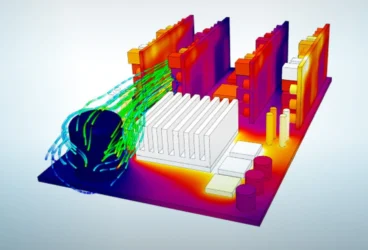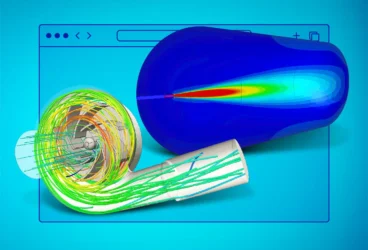Here at SimScale, we write a lot about the importance of thermal management, or more specifically, electronics cooling, for all kinds of applications. From electric vehicles and lighting solutions, to PCBs and enclosures. We have many articles explaining the disastrous outcomes that can become a reality if thermal management is not achieved (especially in regards to battery cooling) as well as what engineers can expect to save in money, time, and other resources if thermal management is assessed early in the design process.
In this article, we will elaborate on this topic, from the evolution of evaluating thermal management, to how cloud-based thermal analysis is making a real difference for engineers; all from the perspective of our customers.
This paper addresses the difference between on-premises software and SaaS
solutions for computer-aided engineering, explaining how SaaS came to be and its
key benefits.
The Early Evolution of Evaluating Thermal Management: Prototypes
Recently, some of the SimScale team sat down (virtually) with David McCall, an experienced engineering & product design professional, and former senior mechanical engineer at QRC Technologies. David discussed with our team his career, mechanical engineering, CAD to CAE, and the future of product design while evaluating the role of cloud-based simulation.
One consistent topic that could be picked out in the podcast was how thermal analysis for product design had changed over the course of David’s career, from a time when David experienced resource-wasting and cost-effective prototyping as the sole evaluation path, to now the existence of online and cloud-based simulation platforms, like SimScale. While David firmly believes nothing will ever entirely replace physical prototyping, especially with 3D printing innovations happening in this industry, he does believe the continued evolution of thermal management practices will continue on an increasingly virtual and cloud-based trajectory.
How Cloud-Based Simulation Is a Game Changer for Thermal Management
The SimScale team then virtually interviewed OnLogic’s Erick Kopff, another engineering professional with a shorter career span compared to David’s, but a focused experience in thermal management of electronics. In this podcast, Erick explained his experience with CAD and cloud-based CFD tools, as well as how SimScale’s online simulation platform is a near perfect fit for his team’s fast and agile design process.
As COVID-19 has affected nearly all businesses worldwide, the engineering sector was no different, and many engineers had to make the switch, many for the first time, to home office. With on-premises evaluation and simulation tools being very common across this industry, OnLogic benefited from having a cloud-based thermal management tool in their virtual toolbelt. With cloud-based tools, such as SimScale, gaining momentum, the evolution of thermal management seems to be reaching for the stars, and landing amidst the cloud.
Thermal Analysis In the Cloud: SimScale Electronics Cooling Case Studies
For more information on the companies that have successfully made the switch to cloud-based thermal management evaluation, check out these case studies:
- OnLogic Improved Their Design Time Through Cloud-Based Simulation From SimScale
- Bold Valuable Technology Made the Switch to Cloud-Based Simulation for Battery Cooling with SimScale
- Spark Used Simscale To Assess the Performance of Their MIRA Camera
- QRC Technologies Prevented Thermal Damage in Its Electronics Design With SimScale



